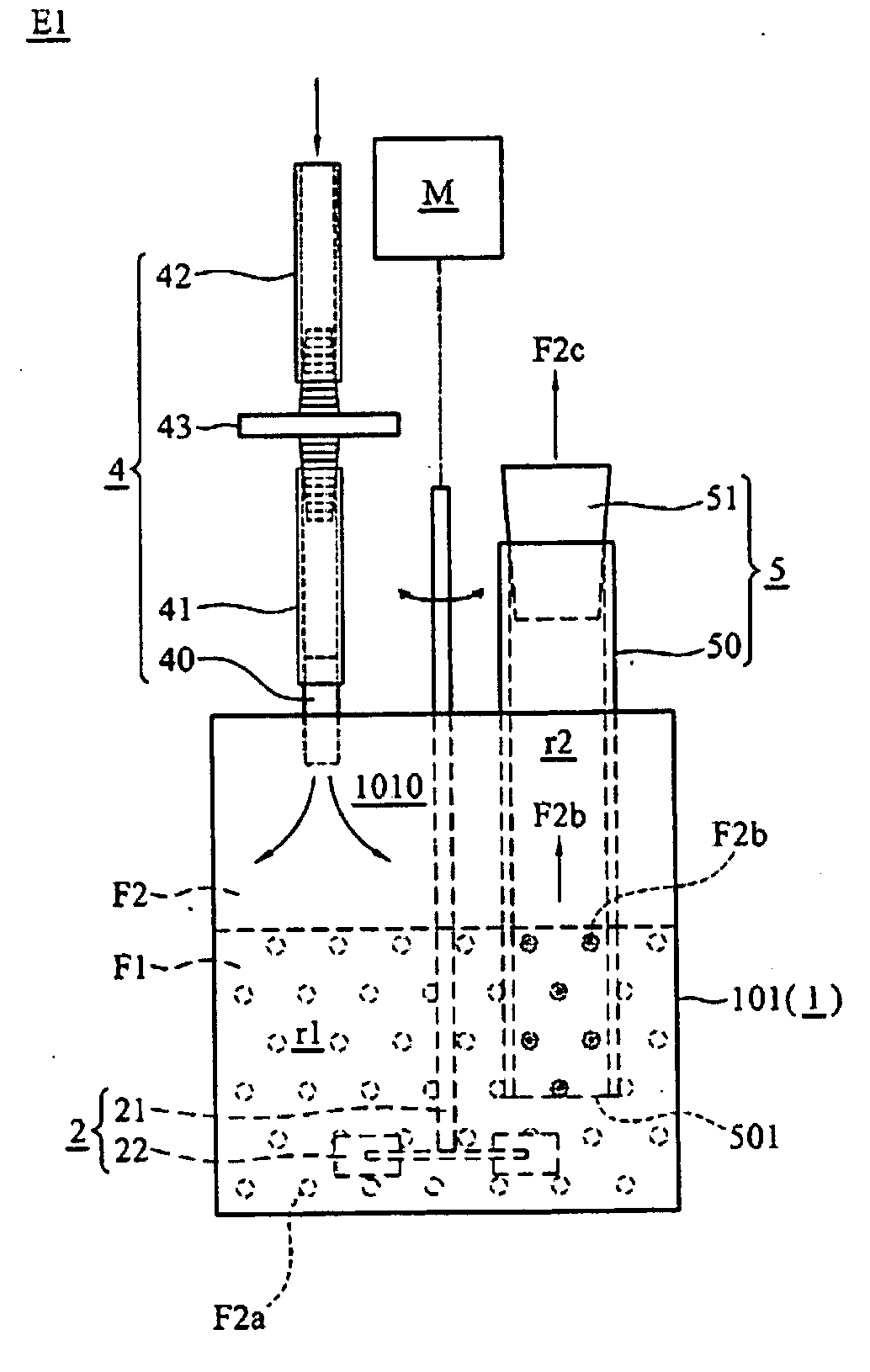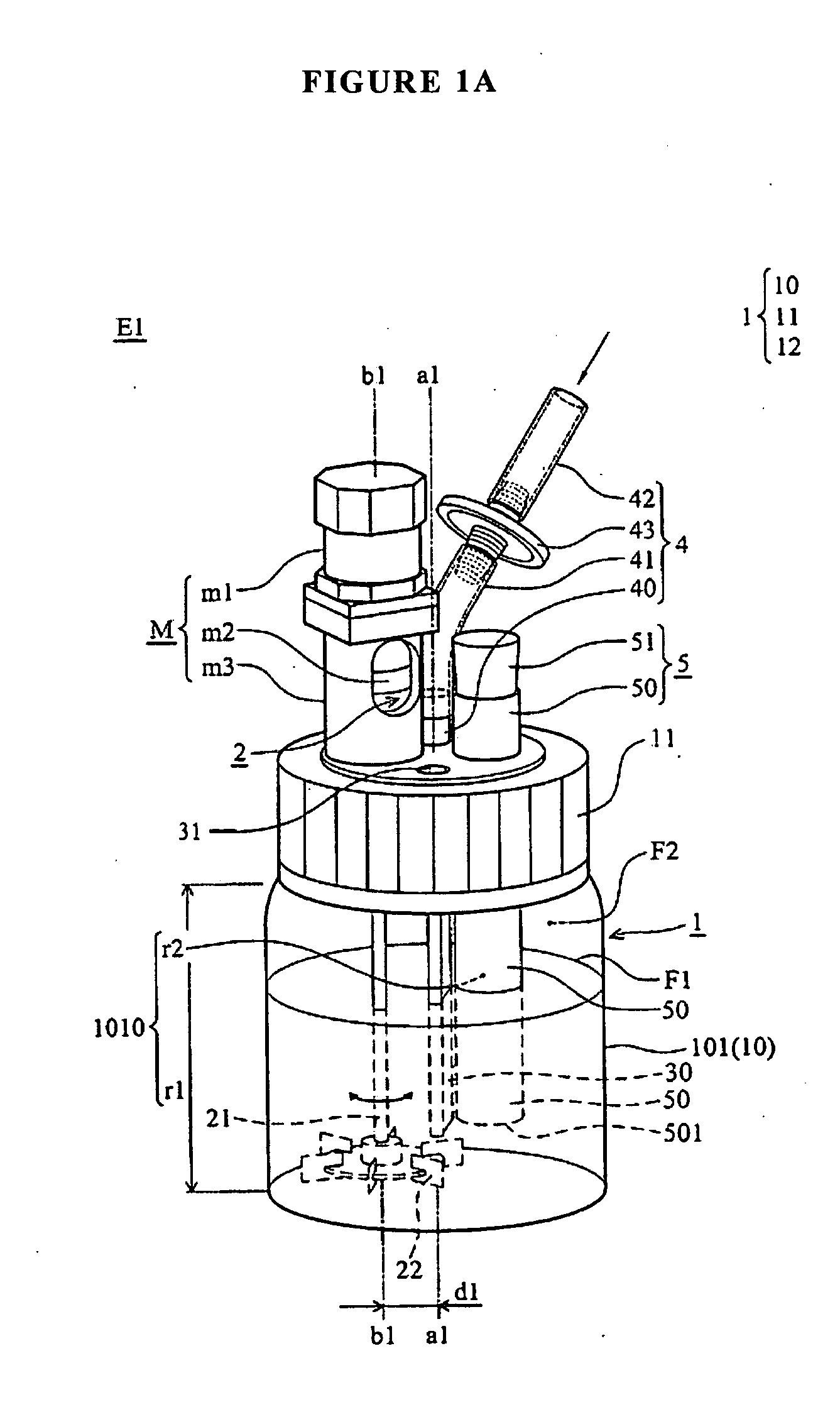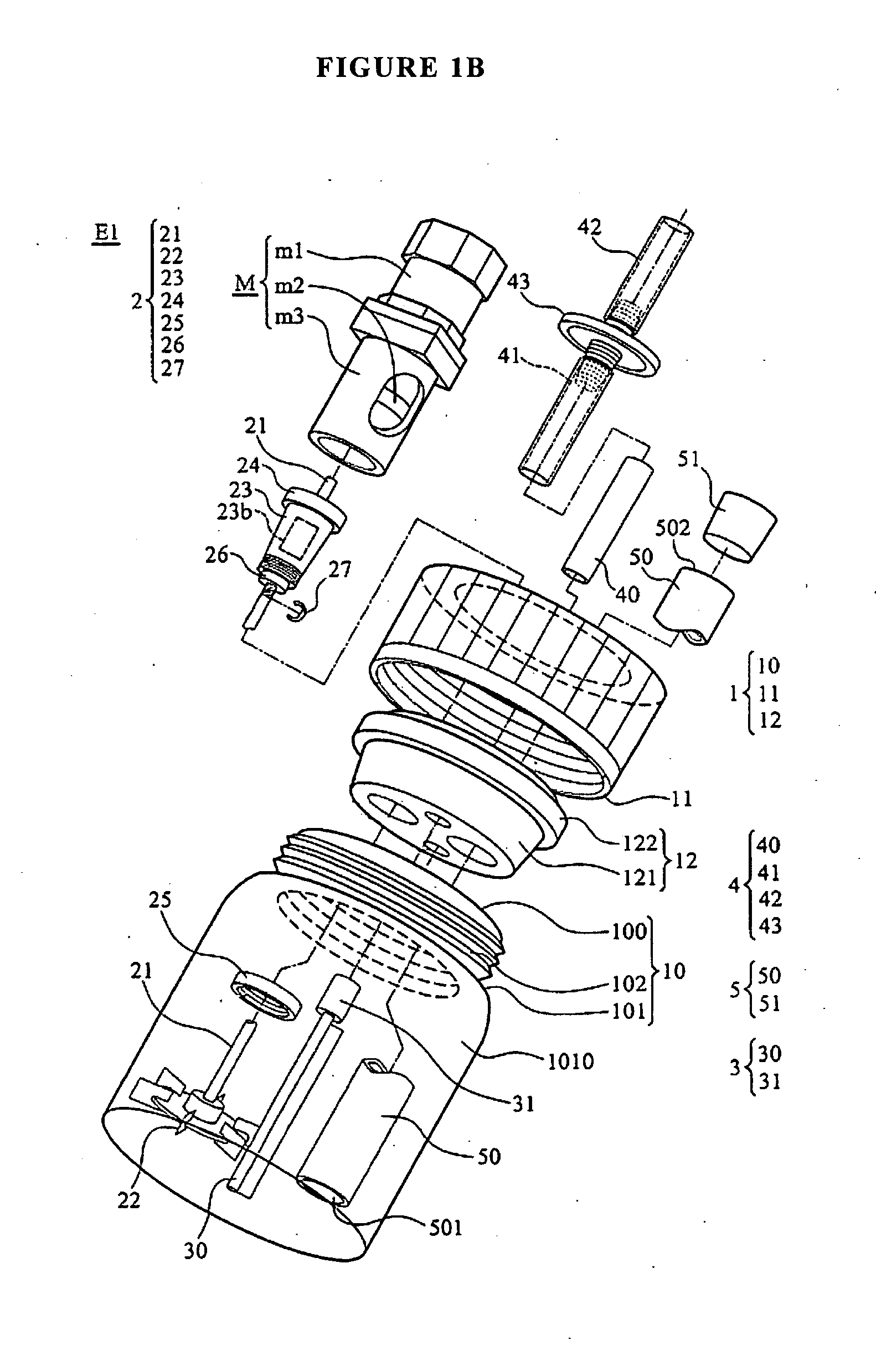Reaction vessel assembly with gas exchange means
a technology of gas exchange and reaction vessel, which is applied in the direction of lighting and heating apparatus, heating types, and separation processes, etc., can solve the problems of limited atmospheric gas exchange or ventilation, limited atmospheric exchange between the headspace of the flask and the ambient incubator gas, and achieve enhanced convective gassing flow and mixing power drawn
- Summary
- Abstract
- Description
- Claims
- Application Information
AI Technical Summary
Benefits of technology
Problems solved by technology
Method used
Image
Examples
example
[0042]Dimensions of a 500 ml Schott Duran GLS80 reaction vessel assembly E1′ in FIG. 6 are the following: the gas inlet port insert 40 and the thermometer well 9's OD and ID, respectively, 8 and 6 mm; the gas-lift venting tube 50's OD and ID, respectively, 20 and 17 mm; 6-blade impeller 22's diameter and height, respectively, 38 and 10 mm; tap water volume in reaction chamber 1010 400 ml. The liquid phase F1 is 58 mm in depth, the submersion depth of thermometer well 9, the gas-lift venting tube 50 and the impeller 22 are, respectively, 42, 22 and 32 mm. To make a blow-hole for soap bubble 50b blowing measurement, a rubber material 16 mm serum tube plug 51′ was pulled inside out and the plug end bored open and placed on top of the opening of the gas-lift venting tube 50. This produces an 8.5 mm ID blowhole for the soap bubble blowing experiment and is used to measure the gas vent flux by timing and measuring the bursting height or diameter of the soap bubble 50b from a finger smear ...
PUM
 Login to View More
Login to View More Abstract
Description
Claims
Application Information
 Login to View More
Login to View More - R&D
- Intellectual Property
- Life Sciences
- Materials
- Tech Scout
- Unparalleled Data Quality
- Higher Quality Content
- 60% Fewer Hallucinations
Browse by: Latest US Patents, China's latest patents, Technical Efficacy Thesaurus, Application Domain, Technology Topic, Popular Technical Reports.
© 2025 PatSnap. All rights reserved.Legal|Privacy policy|Modern Slavery Act Transparency Statement|Sitemap|About US| Contact US: help@patsnap.com



